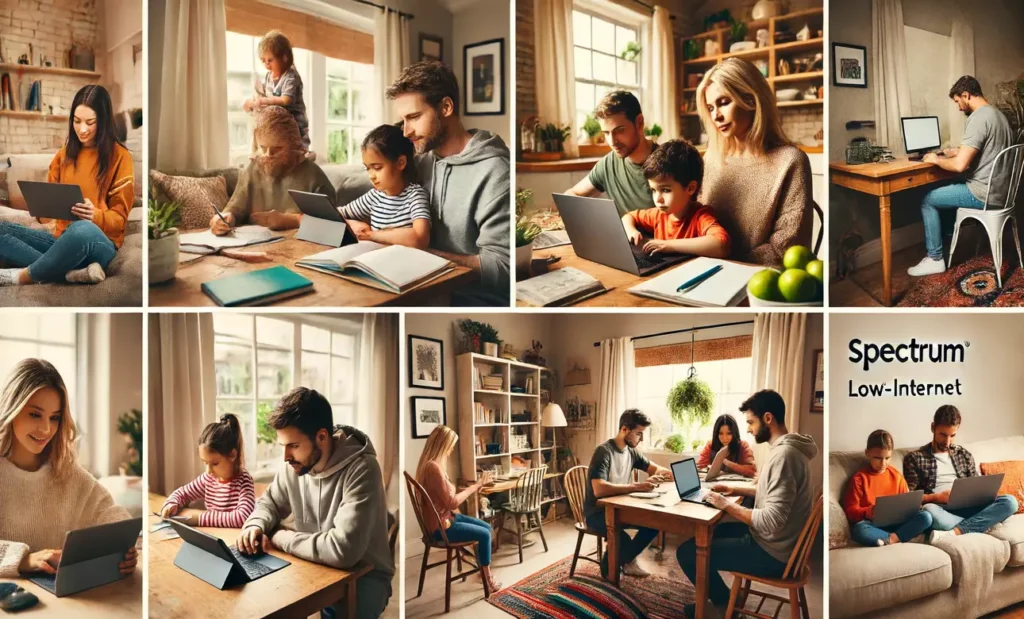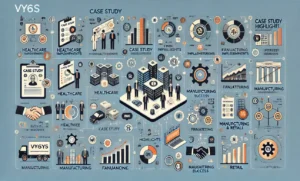Spectrum Low Income Internet: Bridging the Digital Divide

In today’s digital era, internet access is crucial. The Internet is crucial in our daily lives, from education to employment opportunities. However, not everyone can afford high-speed internet services. To address this gap, Spectrum offers low-income internet programs to provide affordable internet access to those most in need. This article explores Spectrum’s low-income internet options, their benefits, eligibility criteria, and how you can take advantage of these programs.
- What is Spectrum Low Income Internet?
- Benefits of Spectrum Low Income Internet
- How to Apply for Spectrum Internet for Low-Income Households
- Practical Tips for Maximizing Your Low-Income Internet Service
- Case Studies
- Future Trends in Low-Income Internet Programs
- Frequently Asked Questions (FAQs)
- Conclusion
What is Spectrum Low Income Internet?
Overview of Spectrum’s Low-Income Internet Programs
Spectrum offers two main low-income internet programs: Spectrum Internet Assist and the Affordable Connectivity Program (ACP). These programs aim to provide high-speed Internet at a reduced cost to eligible households.
- Spectrum Internet Assist: This program offers a low-cost internet plan with speeds up to 30 Mbps, a free internet modem, and no data caps. It is designed for low-income families, students, and seniors.
- Affordable Connectivity Program (ACP): The ACP, administered by the Federal Communications Commission (FCC), has provided a discount of up to $30 per month on internet services for eligible households. For individuals residing on Tribal lands, the discount reached up to $75 per month. But now, the ACP program has been closed, and the benefits have stopped.
Eligibility Criteria
To qualify for Spectrum Internet Assist, households must meet one of the following criteria:
- Enroll in the federally-assisted NSLP meal program for schools across the country.
- Be a part of the Community Eligibility Provision (CEP) of the NSLP
- Receive Supplemental Security Income (SSI) for applicants age 65 and older
For the Affordable Connectivity Program, eligibility is determined if at least one person in the household meets one of these criteria:
- Qualifies for the Lifeline program
- Qualifies for benefits through the free and reduced-price school lunch program or the school breakfast program
- Has a household income at or below 200% of the Federal Poverty Guidelines
- Participates in specific assistance programs such as Medicaid, SNAP, or Federal Public Housing Assistance
Benefits of Spectrum Low Income Internet
Affordable Internet Plans
Spectrum’s low-income internet plans are designed to be affordable while providing adequate speed and reliability for everyday use. For example, the Spectrum Internet Assist plan offers speeds up to 30 Mbps, sufficient for browsing, streaming, and attending online classes.
No Data Caps and Free Equipment
The Spectrum Internet Assist and ACP plans have no data caps, ensuring that users can enjoy unlimited internet access without worrying about additional charges. Additionally, these plans often include free equipment like modems, reducing the overall cost for users.
Broad Coverage
Spectrum’s low-income internet services are available in many areas across the United States. This extensive coverage ensures that more families and individuals can benefit from affordable internet access, helping to bridge the digital divide.
Supporting Education and Employment
Access to affordable Internet is crucial for educational and employment opportunities. Students can attend online classes, complete homework, and access educational resources. Job seekers can search for jobs, submit applications, and participate in virtual interviews. Spectrum’s low-income internet programs help support these critical activities.
How to Apply for Spectrum Internet for Low-Income Households
Application Process for Spectrum Internet Assist
- Check Eligibility: Ensure you meet the eligibility criteria for the Spectrum Internet Assist program.
- Gather Documentation: Collect necessary documents such as proof of participation in qualifying programs (e.g., NSLP, SSI).
- Please apply Online or by Phone: Submit your application through Spectrum’s website or contact customer service for assistance.
- Installation: Once approved, schedule an installation date for the internet service. Spectrum typically provides free installation for qualifying households.
Practical Tips for Maximizing Your Low-Income Internet Service
Stay Updated on Available Programs
Internet service providers, including Spectrum, frequently update their offerings and eligibility criteria for low-income programs. Staying informed about these changes is crucial for maximizing the benefits of your internet service. Regularly check Spectrum’s website for updates on their low-income programs. Subscribing to their newsletters is another effective way to stay informed about new programs, changes in existing ones, and special offers that may be beneficial to you. Additionally, following Spectrum on social media can provide real-time updates and announcements.
Optimize Your Internet Usage
Optimizing your internet usage can significantly improve your online experience, especially if you are on a low-income plan with limited speeds. Here are some practical tips:
- Close Unnecessary Background Applications: Applications running in the background can consume bandwidth and slow down your connection. Ensure only essential applications are open, especially during critical activities like virtual meetings or online classes.
- Use Wired Connections for Critical Activities: For activities that require a stable and fast connection, such as video conferencing or gaming, use a wired Ethernet connection instead of Wi-Fi. Wired connections typically offer more reliable speeds and lower latency.
- Position Your Router Strategically: Position your wireless access point in the middle of your living space for optimal signal distribution. Avoid placing it near electronic devices or thick walls that can interfere with the signal. Elevating the router can also help in dispersing the signal more effectively.
- Update Router Firmware: Regularly check your router for firmware updates. Applying these updates can enhance performance, security, and stability.
Take Advantage of Free Resources
Numerous organizations provide free resources and tools to help low-income households maximize their internet service:
- Local Libraries: Many libraries offer free internet access, computer usage, and digital literacy training. They also provide resources like e-books and online databases that can be accessed from home with a library card.
- Community Centers: Community centers often host computer classes and internet-use workshops. These sessions can help you learn new skills and maximize your internet service.
- Non-Profit Organizations: Organizations like EveryoneOn and PCs for People offer affordable computers, free or low-cost internet services, and digital literacy training to low-income families. These resources can be invaluable in ensuring you get the most out of your internet connection.
- Educational Institutions: Schools and universities sometimes offer free resources and training for students and families. Check with local academic institutions to see what programs might be available.
By staying informed, optimizing your usage, and leveraging available resources, you can maximize the benefits of your low-income internet service and ensure a more connected and productive life.
Case Studies
Case Study 1: Helping Students Succeed
A family in California with two school-aged children struggled to keep up with online classes due to unreliable internet service. By enrolling in Spectrum Internet Assist, they received a stable connection that allowed their children to attend classes without interruption and complete their homework on time.
Case Study 2: Supporting Job Seekers
In New York, a single mother lost her job due to the pandemic. With the help of the Affordable Connectivity Program, she was able to get discounted internet service. This enabled her to search for new job opportunities, apply online, and attend virtual interviews, ultimately leading to new employment.
Case Study 3: Bridging the Digital Divide
A senior citizen in Texas, living on a fixed income, faced isolation due to the lack of internet access. After qualifying for Spectrum Internet Assist, she could connect with family and friends through video calls and access critical online services, improving her quality of life.
Future Trends in Low-Income Internet Programs
Expansion of Programs
The demand for affordable internet access is growing as the digital divide continues to be a critical issue. In response, governments and private companies will likely introduce more low-income internet programs or expand existing ones. Collaborations between the public and private sectors can increase funding and extend reach to more households. For example, the U.S. government has already initiated programs like the Affordable Connectivity Program (ACP), which partners with internet service providers to offer subsidized internet services. Such initiatives are expected to grow, providing more extensive support to underserved communities.
Improved Internet Infrastructure
Technological advancements are set to play a significant role in improving internet infrastructure, particularly in underserved areas. Upgrades in technology, such as the deployment of 5G networks and the expansion of fiber-optic cables, promise faster and more reliable internet connections. These improvements will enhance the quality of low-income internet services, ensuring that even rural and remote areas can access high-speed Internet. This progress is crucial for bridging the digital divide and providing equitable access to digital resources for all.
Increased Digital Literacy Initiatives
There will likely be a stronger emphasis on digital literacy programs to leverage internet access’s benefits fully. These initiatives aim to equip individuals and families with essential skills to use the Internet effectively. Digital literacy programs often cover various topics, including online safety, navigating digital tools, and accessing online resources. By promoting digital literacy, these programs help users maximize their internet connections, improve their educational and employment opportunities, and enhance their overall quality of life.
Specific Initiatives
- Government Initiatives: Governments may increase funding for digital literacy programs in schools and community centers, ensuring that individuals of all ages have access to necessary digital skills training.
- Private Sector Contributions: Companies may offer free or low-cost digital literacy workshops as part of their corporate social responsibility initiatives. For instance, tech companies might provide training on using their products effectively, thereby fostering a more digitally inclusive community.
- Non-Profit Organizations: Non-profits will continue to play a pivotal role in promoting digital literacy. Organizations such as EveryoneOn and PCs for People already provide resources and training to low-income households and are likely to expand their efforts in the future.
- Online Resources: The availability of free online courses and tutorials will grow, making it easier for individuals to learn at their own pace and improve their digital skills.
Focusing on these future trends aims to create a more digitally inclusive society where everyone, regardless of economic status, has access to high-quality Internet and the skills to use it effectively.
Frequently Asked Questions (FAQs)
1. What is Spectrum Low Income Internet?
Spectrum Low Income Internet includes programs like Spectrum Internet Assist and the Affordable Connectivity Program, which provide discounted internet services to eligible low-income households.
2. How do I qualify for Spectrum Internet Assist?
You qualify for Spectrum Internet Assist if your household participates in the National School Lunch Program, Community Eligibility Provision of the NSLP, or receives Supplemental Security Income (SSI) for applicants 65 and older.
3. What advantages does the Affordable Connectivity Program offer?
The ACP offers a discount of up to $30 per month on internet services for eligible households and up to $75 per month for those living on Tribal lands.
4. How do I apply for Spectrum Internet Assist?
You can apply for Spectrum Internet Assist by checking your eligibility, gathering necessary documentation, and submitting your application online or by phone through Spectrum’s customer service.
5. Do Spectrum’s low-income internet plans have any data caps?
No, Spectrum Internet Assist and ACP plans have no data caps, allowing unlimited internet access without additional charges.
6. Can I use Spectrum Low Income Internet for remote learning and work?
Spectrum’s low-income internet plans provide sufficient speed and reliability for remote learning, work, and other online activities.
7. Is equipment provided for free with Spectrum Low Income Internet?
Spectrum typically provides free equipment such as modems with their low-income internet plans.
8. How often are new low-income internet programs introduced?
New programs are introduced based on the needs of the community and funding availability. It’s essential to stay informed about updates from Spectrum and other internet providers.
9. Can I switch from my current internet plan to a low-income plan?
If you qualify for a low-income plan, you can switch from your current plan to a low-cost option by contacting Spectrum’s customer service.
10. What should I do if I face issues with my low-income internet service?
If you encounter any issues with your service, contact Spectrum’s customer support for assistance. They can help troubleshoot problems and ensure you receive the benefits you’re entitled to.
Conclusion
Spectrum low income internet programs like Spectrum Internet Assist provide affordable internet access to those most in need. These programs help bridge the digital divide, support education and employment opportunities, and foster community engagement. By staying informed and taking advantage of these programs, eligible households can enjoy reliable and affordable internet access, enhancing their quality of life.






